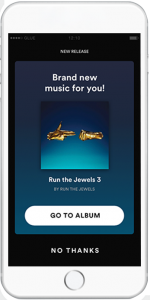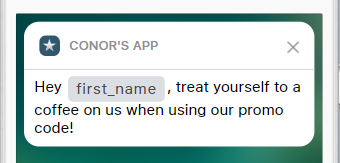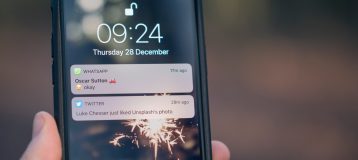Personalizing app content drives conversions up across every part of your app’s customer life cycle. The proof? Segment reported that 44% of buyers will likely become repeat customers after a personalized shopping experience and impulse buys increased by nearly 50% when recommendations were personalized, while Hubspot reports that personalized calls to action resulted in an increase in engagement of over 200%, when compared to generic calls to action.
Creating personalized content makes it relevant to each user, which delivers increased engagement than generic content campaigns. For example, if a news app keeps sending sports updates you’re not interested in, you’ll be more likely to ignore them, or worse – delete the app. Knowing when to send content, who to send it to and what to send is massively important for an app.

For example, putting a cat photo in this blog article isn’t relevant at all to this audience in any way
Personalization leads to relevance and in turn, higher engagement.
Here’s a few strategies to bring personalization into your app’s content and achieve higher engagement and conversion rates:
Make it Personal
A very simple type of personalization is adding a user’s name to a piece of content. Adding a user’s first name into a push or a simple message wishing a user happy birthday helps make the user feel valued. Adding a name to content results in open rates of over 21%.
Use Their Interests
A step up from adding a name is to send offers based off of the user’s previous purchase and browsing habits. This information can be collected and used to shape future content the user sees in your app, such as pushing relevant products to the front of the app or discounts on similar products.
Philz Coffee uses information about their customer’s orders, like what they order, when they order it and couple it with the user’s name to create personalized push notifications that the user acts on.
Context is King
Sending content based on the user’s location is another way of personalizing the content experience. There are many ways of introducing personalization based on location, like a geofence around a certain area or a beacon in a store.
You could be very specific with location personalization – if a user is near a certain point, like a clothing store while having an item in an online shopping cart from the same brand, you can send a push notification for them to try it on in store, or buy it there and then. 89% of marketers reported that sales increased when using location based marketing, with 84% reporting an increase in engagement.
All of the Above
A very effective personalization system is to combine all three of these strategies into one piece of content, whether it be a push notification or a piece of content in a feed. Spotify personalizes a lot of their user’s content, with playlists that have songs more tuned to the user’s taste resulting in a 66% increase in songs saved.
Spotify also uses in-app notifications and their home feed to recommend the user new releases. The albums and singles featured aren’t just picked from popularity however – they’re influenced by the user’s listening history and the artists they follow. Spotify also combines location and behavioral data to recommend concerts and local artists that are relevant to the user’s interests. This mixture of personalization techniques helps increase user engagement by directly addressing the user’s interests in a location relevant to them.

And they don’t judge your music taste either!
By personalizing what your user sees, the content you send out becomes more relevant to them and up to 42% of users consider relevance highly important when receiving content from a brand. Coupled with how users are less likely to purchase from a company that sends irrelevant content, personalizing content is a must for your brand.
How you present this content is vital, and Pulsate can help you deliver personalized mobile content at scale to individual users. Pulsate enables app owners to re-engage users in real time with personalized content that drives significant uplift. Registrations, onboarding, upsell, cross sell, abandonment, churn… at any stage of the customer journey, Pulsate gives you the tools to easily identify the data required to identify your key customers and deliver growth in as little as two weeks.






HAVE YOUR SAY. LEAVE A COMMENT